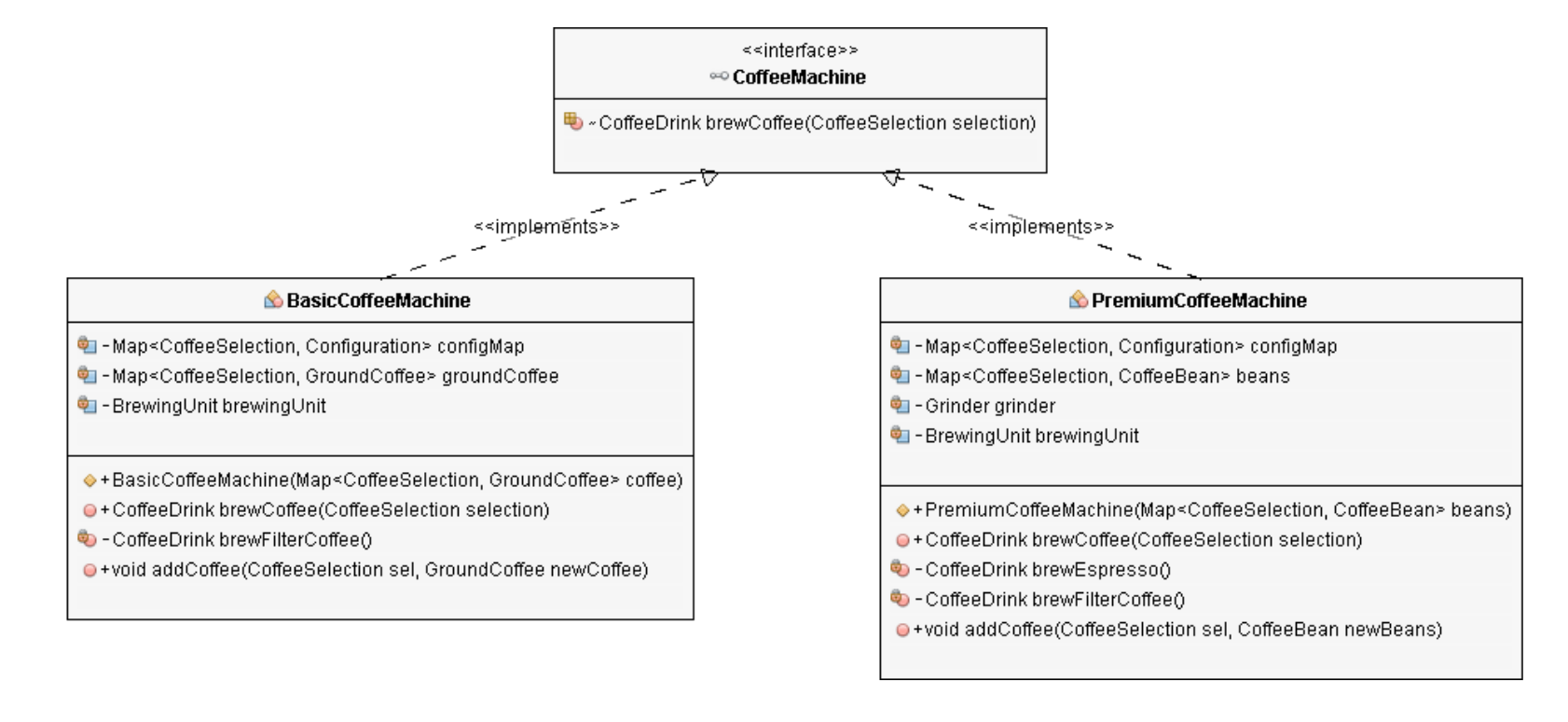I came across an article about LSP https://stackify.com/solid-design-liskov-substitution-principle/ . It seems that a strategy pattern could be implemented here but I cannot see how to implement it.
My idea is to let the brewCoffee be the strategy method, in which i state what kind of coffee should be brewed. The following is an overview over the design,
BasicCoffeeMachine should only be able to brew filter coffee, while PremiumCoffeeMachine should be able to brew both filter and espresso. But as of yet, both machines can do both. Should i introduce another interface, one being for BasicCoffeeMachine and one for PremiumCoffeeMachine?
Any feedback overall?
How would you implement the strategy pattern in this case?

